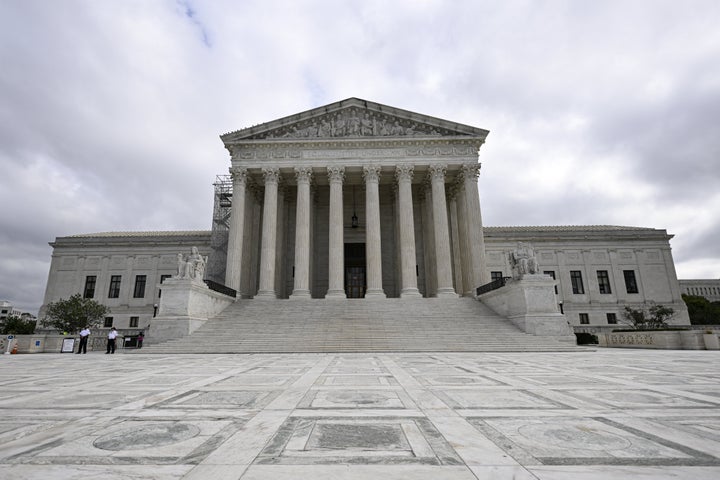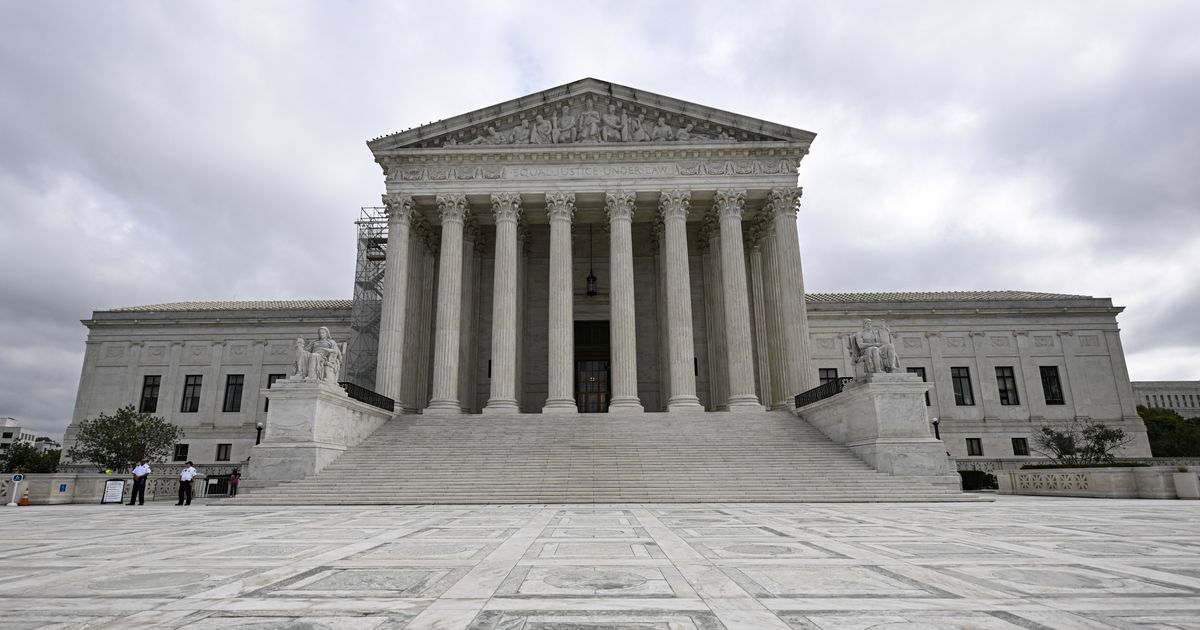The Supreme Court’s conservative supermajority upended decades of precedent governing the ability of federal agencies to set regulations in a ruling on Friday.
The court’s decision written by Chief Justice John Roberts, which overturns its 1984 finding in Chevron v. Natural Resources Defense Council, will cause a sea change in how federal agencies are able to regulate everything from climate change to artificial intelligence to labor and workplace practices. It marks a huge win for corporations, as it will be significantly harder for the government to write rules.
“Courts must exercise their independent judgment in deciding whether an agency has acted within its statutory authority,” Roberts wrote.
The decision is also a major power grab by the judicial branch, which will now play a bigger role as the final arbiter over which new regulations are allowed to stand and which will be struck down.
The ruling concerns two cases, Loper Bright Enterprises v. Raimondo and Relentless Inc. v. Department of Commerce. Jackson joined her liberal colleagues, Elena Kagan and Sonia Sotomayor, in dissenting in Relentless, which was a 6-3 decision, but recused herself from Loper Bright Enterprises.
The issue of whether to overturn Chevron came before the court after two fishing companies ― Relentless and Loper Bright Enterprises ― challenged regulations imposed in 2020 by the National Marine Fisheries Service that required fishing boats to pay the salary of the federal inspectors who ride on them. Lawyers for the fishing companies argued that the court should not only overturn the regulations, but also eliminate the deference afforded to agencies to write such regulations by the court’s precedent in Chevron.
In Chevron, the Supreme Court crafted a doctrine that granted the federal government broad deference to enact regulations without judicial interference. It effectively stated that agencies had the power to enact regulations without having to wait for the courts to weigh in, unless the regulation was an unreasonable interpretation of the underlying law enacted by Congress that delegated regulatory authority to that agency.
But, Roberts wrote, “agencies have no special competence in resolving statutory ambiguities.”
“Courts do,” he added. “The Framers anticipated that courts would often confront statutory ambiguities and expected that courts would resolve them by exercising independent legal judgment. Chevron gravely erred in concluding that the inquiry is fundamentally different just because an administrative interpretation is in play.”
Roberts also took issue with “the view that interpretation of ambiguous statutory provisions amounts to policymaking suited for political actors rather than courts,” as a misconception of the judicial role.
“By forcing courts to instead pretend that ambiguities are necessarily delegations, Chevron prevents judges from judging,” Roberts wrote.
The court’s new doctrine provides significantly less deference to agencies, while granting judges more power to strike down regulations if the court determines that Congress did not explicitly delegate authority to enact the specific regulation in question. The decision is a product of the changing ideological and partisan makeup of the courts and the executive branch.

Celal Gunes/Anadolu via Getty Images
Still, Roberts noted that despite overruling Chevron, “we do not call into question prior cases that relied” on that framework.
“The holdings of those cases that specific agency actions are lawful —including the Clean Air Act holding of Chevron itself — are still subject to statutory stare decisis despite our change in interpretive methodology,” he said.
When the court ruled in Chevron in 1984, conservatives were a minority within the judiciary, especially the district and appeals courts. That decision gave deference to the Environmental Protection Agency to loosen environmental regulations, at a time when Republicans dominated in presidential elections and more often controlled the federal agencies issuing regulations — a way to empower the more conservative executive branch to issue deregulatory rules for corporations.
Today, the dynamic is reversed, with conservatives in firm control of the judiciary and Democrats having won the presidential popular vote in eight out of the past nine elections. By ending Chevron, the Supreme Court is making it harder for Democratic presidential administrations to enact regulations, while placing the power to strike down those regulations in the hands of a far more conservative judiciary.
The conservative justices made this clear during arguments in the Relentless and Loper Bright cases, when Justice Samuel Alito alluded to the fact that conservative interpretations of law are more prevalent in the judiciary today than they were when Chevron was decided.
“Would you agree that one of the reasons why Chevron was originally so popular was concern that judges were allowing their policy views, consciously or unconsciously, to influence their interpretation of the statutes?” Alito asked Roman Martinez, the lawyer for Relentless.
Martinez agreed, saying that the “fear” the judges would use more liberal modes of legal interpretation “has diminished over time,” thanks to the “very salutary developments” in how conservative justices have made originalism and textualism the dominant form of interpretation.
The court had already begun to move away from applying the Chevron doctrine in cases involving certain important executive branch actions. In cases like West Virginia v. EPA in 2022 and Biden v. Nebraska in 2023, the court’s conservatives tossed out new carbon emissions rules and student loan debt relief, respectively, for violating the so-called major questions doctrine ― which supposedly forbids the adoption of executive actions on questions of vast “economic and political significance” without express congressional assent.
Now, the judiciary will have even greater leeway to strike down agency actions across the board. The decision will likely have monumental effects on the future of regulatory actions across the entire economy, as courts will have wider latitude to strike down everything from climate change regulations issued by the EPA to competition rules issued by the Federal Trade Commission to net neutrality rules laid out by the Federal Communications Commission.
In her dissent, Kagan said the reversal of Chevron effectively means the majority has turned “itself into the country’s administrative czar.”
“A rule of judicial humility gives way to a rule of judicial hubris,” Kagan wrote in her dissent.







